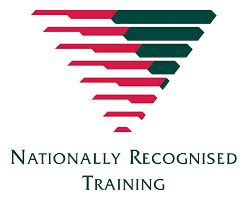HLTAID011 First Aid Course Content
Assessment Requirements for HLTAID011 first aid

HLTAID003 First Aid formerly known as HLTAID003, standards are set for all Australian vocational accredited training providers. They must follow the assessment guidelines set out by The Australian Skills Quality Authority “promotes quality training so that students, employers, and industry can have confidence in Australia’s training sector”. (ASQA)
Attendance is required to demonstrate competence, so we provide first aid training at our venues in Ballina, Lismore. Alstonville and Byron Bay. We can also complete our courses onsite or at other venues in all Northern NSW or North Coast towns.
Private educational providers like International Paramedic College, The Red Cross and St John Ambulance, we are fully regulated by The Australian Government’s Skills Quality Authority (ASQEA) to provide the health and safety qualifications we deliver. Our regulation is through this national government accreditation body to provide professional courses and accredited qualifications like our First Aid Course HLTAID003 which is recognised nationally as the standard requirement for first aid training in Australia.
It is how training providers interpret and deliver the content that provides the learner with a quality training experience.
Unit Of competency
Modification History
Not applicable.
Application
This unit describes the skills and knowledge required to provide a first aid response to a casualty in line with first aid guidelines determined by the Australian Resuscitation Council (ARC) and other Australian national peak clinical bodies.
The unit applies to all persons who may be required to provide a first aid response in a range of situations, including community and workplace settings.
Specific licensing/regulatory requirements relating to this competency, including requirements for refresher training, should be obtained from the relevant national/state/territory Work Health and Safety Regulatory Authorities.
Elements and Performance Criteria
|
ELEMENTS |
PERFORMANCE CRITERIA |
|
Elements describe the essential outcomes |
Performance criteria describe the performance needed to demonstrate achievement of the element. |
|
1. Respond to an emergency situation. |
1.1. Recognise and assess an emergency. 1.2. Ensure safety for self, bystanders, and casualty. 1.3. Assess the casualty and recognise the need for first aid response. 1.4. Seek assistance from emergency services. |
|
2. Apply appropriate first aid procedures. |
2.1. Perform cardiopulmonary resuscitation (CPR) in accordance to ARC guidelines. 2.2. Provide first aid in accordance with established first aid principles. 2.3. Display respectful behaviour towards casualty. 2.4. Obtain consent from casualty where possible. 2.5. Use available resources and equipment to make the casualty as comfortable as possible. 2.6. Operate first aid equipment according to manufacturers’ instructions. 2.7. Monitor the casualty’s condition and respond in accordance with first aid principles. |
|
3. Communicate details of the incident. |
3.1. Accurately convey incident details to emergency services. 3.2. Report details of incident in line with appropriate workplace or site procedures. 3.3. Complete applicable workplace or site documentation, including incident report form. 3.4. Maintain privacy and confidentiality of information in line with statutory or organisational policies. |
|
4. Review the incident. |
4.1. Recognise the possible psychological impacts on self and other rescuers and seek help when required. 4.2. Contribute to a review of the first aid response as required. |
Foundation Skills
|
The Foundation Skills describe those required skills (language, literacy, numeracy, and employment skills) that are essential to performance. |
|
Foundation skills essential to performance are explicit in the performance criteria of this unit of competency. |
Unit Mapping Information
Supersedes and not equivalent to HLTAID003 Provide first aid
Links
Companion Volume implementation guides are found in VET Net – https://vetnet.gov.au/Pages/TrainingDocs.aspx?q=ced1390f-48d9-4ab0-bd50-b015e5485705
Assessment requirements
Modification History
Not applicable.
Performance Evidence
Evidence of the ability to complete tasks outlined in elements and performance criteria of this unit in the context of the workplace or community setting.
There must be evidence that the candidate has completed the following tasks in line with State/Territory regulations, first aid codes of practice, first aid guidelines determined by the Australian Resuscitation Council (ARC) and other Australian national peak clinical bodies and workplace or site procedures:
- managed, in line with ARC guidelines, the unconscious, breathing casualty including appropriate positioning to reduce the risk of airway compromise
- managed, in line with ARC guidelines, the unconscious, non-breathing adult, including:
- performing at least 2 minutes of uninterrupted single rescuer cardiopulmonary resuscitation (CPR) (5 cycles of both compressions and ventilation) on an adult resuscitation manikin placed on the floor
- following the prompts of an automated external defibrillator (AED) to deliver at least one shock
- demonstrating a rotation of single rescuer operators with minimal interruptions to compressions
- responding appropriately in the event of regurgitation or vomiting
- managed, in line with ARC guidelines, the unconscious, non-breathing infant, including:
- performing at least 2 minutes of uninterrupted single rescuer CPR (5 cycles both compressions and ventilation) on an infant resuscitation manikin placed on a firm surface
- managed casualties, with the following:
- anaphylaxis
- asthma
- non-life-threatening bleeding
- choking
- envenomation, using pressure immobilisation
- fractures, dislocations, sprains and strains, using appropriate immobilisation techniques
- minor wound cleaning and dressing
- nosebleed
- shock
- responded to at least one simulated first aid incident contextualised to the candidate’s workplace or community setting, where the candidate does not know about the casualty’s condition before starting treatment, including:
- identifying the casualty’s illness or injury through history, signs, and symptoms
- using personal protective equipment (PPE) as required
- providing appropriate first aid treatment
- conveying incident details to emergency services or advising casualty on any required post incident action
- providing an accurate verbal and written report of the incident
- reviewing the incident.
Knowledge Evidence
Demonstrated knowledge required to complete the tasks outlined in elements and performance criteria of this unit:
- guidelines and procedures including:
- ARC guidelines relevant to the provision of first aid
- first aid guidelines from Australian national peak clinical bodies
- potential incident hazards and risk minimisation processes when providing first aid
- infection control procedures, including use of standard precautions and resuscitation barrier devices
- requirements for currency of skill and knowledge
- first aid codes of practice
- appropriate workplace or site procedures relevant to the provision of first aid
- contents of first aid kits
- legal, workplace, and community considerations including:
- duty of care requirements
- own skills and limitations
- consent and how it relates to the conscious and unconscious casualty
- privacy and confidentiality requirements
- awareness of potential need for stress management techniques and available support for rescuers
- considerations when providing CPR, including:
- upper airway and effect of positional change
- appropriate duration and cessation of CPR
- appropriate use of an AED
- safety and maintenance procedures for an AED
- chain of survival
- how to access emergency services
- techniques for providing CPR to adults, children, and infants including:
- how to recognise that a casualty is unconscious and not breathing normally
- rate, ratio, and depth of compressions and ventilation
- correct hand positioning for compressions
- basic anatomy, physiology, and the differences between adults, children, and infants relating to CPR
- signs, symptoms, and management of the following conditions and injuries:
- allergic reaction
- anaphylaxis
- asthma
- non-life-threatening and life-threatening bleeding
- burns
- cardiac conditions, including chest pain
- choking
- diabetes
- drowning
- envenomation—all current treatments
- eye injuries
- fractures, dislocations, strains, and sprains
- head, neck, and spinal injuries
- hypothermia
- hyperthermia
- minor wounds
- nose-bleed
- poisoning
- seizures
- shock
- sharps injuries
- stroke.
Assessment Conditions
Each candidate to demonstrate skills in an environment that provides realistic in-depth, scenarios and simulations to assess candidates’ skills and knowledge.
Due to the nature of this type of training, it is acceptable for the performance evidence to be collected in a simulated environment.
Compression and ventilation skills must be demonstrated on resuscitation manikins, following ARC guidelines for the purpose of assessment of CPR procedures.
Assessment must ensure access to:
- adult and infant resuscitation manikins following ARC guidelines for the purpose of assessment of CPR procedures
- adrenaline auto-injector training device
- AED training devices
- workplace first aid kit
- placebo bronchodilator and spacer device
- different types of wound dressings and bandages
- blankets and items to treat for shock
- personal protective equipment (PPE)
- workplace injury, trauma or illness record, or other applicable workplace or site incident report form.
Simulated assessment environments must simulate real-life situations where these skills and knowledge would be performed, with all the relevant equipment and resources of that workplace or community environment.
Assessors must satisfy the Standards for Registered Training Organisations’ requirements for assessors and must hold this unit or demonstrate equivalent skills and knowledge to that contained within this unit.
Links
Companion Volume implementation guides are found in VET Net – https://vetnet.gov.au/Pages/TrainingDocs.aspx?q=ced1390f-48d9-4ab0-bd50-b015e5485705
Reference:
https://training.gov.au/Training/Details/HLTAID011 accessed on 13/09/2021
If you require further information about the content or how we deliver the course, please contact us here or book a course by clicking on the links below.

Alstonville – Ballina – Bangalow – Brunswick Heads – Byron Bay – Casino – Evans Head – Grafton – Kyogle– Lennox Head – Lismore – Mullumbimby– Ocean Shores– Yamba
